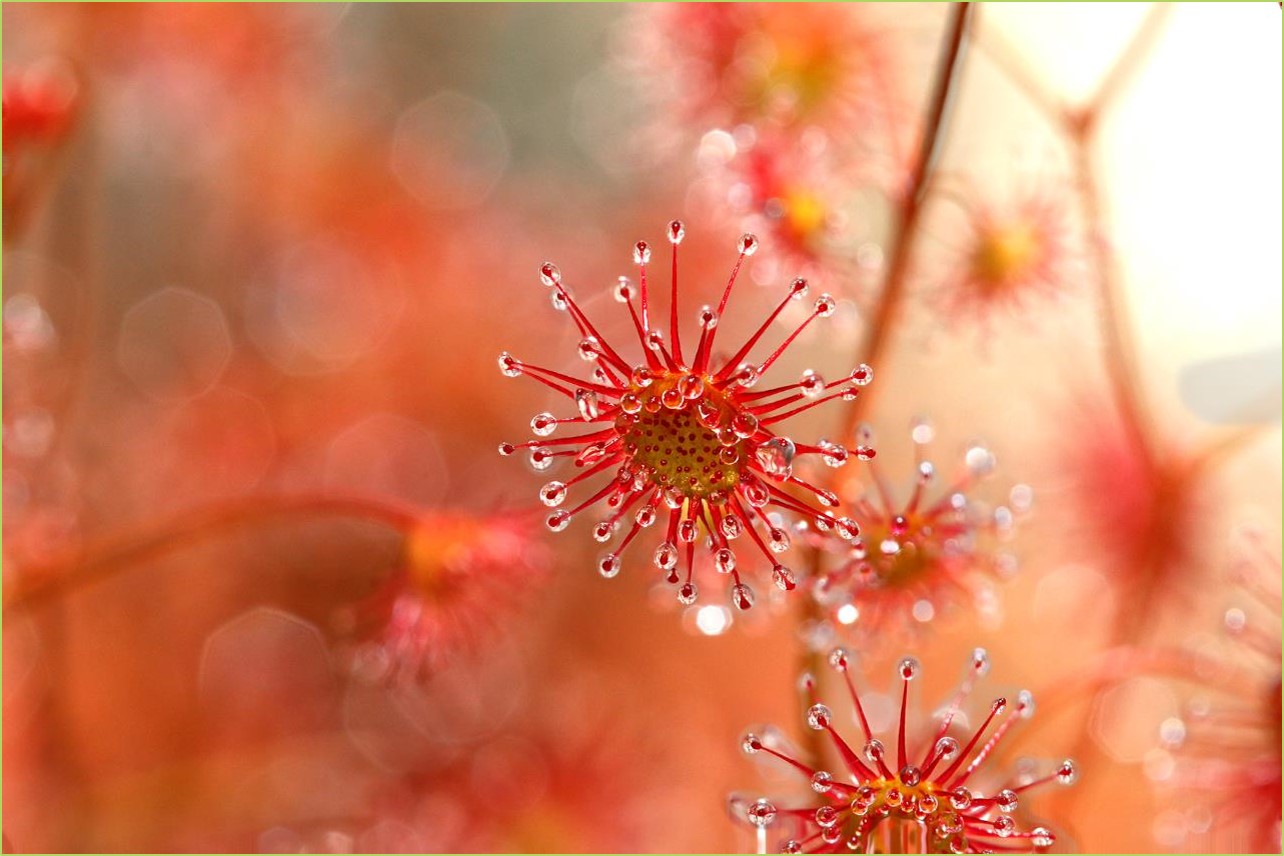Graduate student Rebekah Mohn received a Fulbright to study sundews in Australia. She relies on the CBS Conservatory to grow varieties from many other parts of the work she can't visit in person.

What would induce someone to brave the mosquitos, black flies, and ticks of northern Minnesota and hike five miles in sopping wet shoes?
Two and a half years ago, I entered graduate school fascinated by plants, in general, and chromosome variation among plants, in particular. Chromosomes play an important role in organization and proper inheritance of genetic information in organisms ranging from algae and fungi to plants and animals. In each cell, chromosomes are made up of meters of DNA and the proteins that scaffold and package that DNA. For many organisms, a break in the proteins and DNA that is not properly repaired results in cancer. In addition, an extra copy of a chromosome (or chromosome duplication) can produce diseases like Down syndrome.
Plants are generally much more resilient to having an extra set of chromosomes. Although research has shown that an extra copy of chromosomes can result in larger plants, as in many crops, we have limited data on the impact of chromosome duplication on a plant’s ability to adapt and survive in different environments. We have even less knowledge on the impact of chromosome breakage on a plant’s adaptation. In deciding which organism to study, I found a plant genus that may help us to explore the impact of chromosome variation on adaptation—the genus Drosera, which exemplifies both chromosome duplication and breakage.
Drosera species, commonly known as sundews, are insect-eating plants. The leaves of these plants are covered in tentacle like hairs that excrete sticky dew-like drops at the tip. When an insect becomes entangled in the sticky substance, most of these plants will wrap around their prey, excreting digestive enzymes and absorbing nitrogen and phosphorous from the bug. This enables them to live in nutrient-poor habitats around the world.
There are 250 species of sundews globally: 165 in Australia, 40 species in Africa, 40 species in South America, and eight species in North America. This wealth of diversity allows us to ask interesting questions about the relationship of chromosome variation to species diversity and the formation of new species. This, though, requires sampling many species and doing fieldwork in often-remote locations.
This past summer, I had the privilege of visiting remote fens and bogs in northern Minnesota in search of four of the North American species. These sites are rarely visited because of the soft soil and streams that inhibit travel by vehicle and the dense thickets and wet peat that slow the travel by foot. Nonetheless, we went down a log road, through tamarack, black spruce, and cedar thickets, across mounds of sphagnum moss, and into a sedge-dominated fen. The successful collection of one of the most unique Drosera species in North America, the unique plants in these ecosystems, and these rarely visited sites made this an incredible trip. Similar trips have taken me to Idaho, Montana, New Jersey and Virginia.
However, this is only a small start into the collections required for my research. To sample many of the remaining species I will use a combination of international field work and plants in cultivation. In 2020, I will spend 10 months as a Fulbright Scholar studying and sampling approximately 150 species in Australia. This will include trips in southwest, northwest (the Kimberely), northeast (Queensland), south (Kangaroo Island), and southeast (Tasmania), Australia. Fieldwork of this sort allows me to see the plants in the context of their ecosystems. However, this is not possible for every single species of Drosera on earth.
The College of Biological Sciences Conservatory provides a substitute for the locations I cannot visit. Personally sampling every Drosera species is not feasible for a five-year dissertation project. Instead, I am utilizing the different climate rooms at the College of Biological Sciences Conservatory to cultivate many of the species from South America and Africa.
While braving a host of blood-sucking insects may not be ideal, studying the plants in these incredible ecosystems is worth it. In addition, examining chromosome duplication and breakage in plants will further our understanding of the dynamic nature of chromosome changes across life, including humans. In the long term, this work has the potential to help us better understand adverse life phenomena associated with chromosomal changes, such as cancer. - Rebekah Mohn Ph.D. Candidate Plant and Microbial Biology